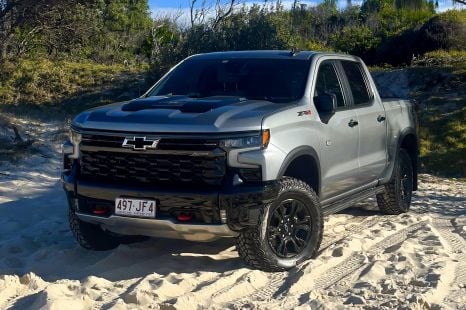

William Stopford
2025 Chevrolet Silverado ZR2 review
1 Month Ago
Volkswagen's first-generation Amarok is on the verge of retirement. Does this Walkinshaw-tuned W580X edition make for a fitting swansong?
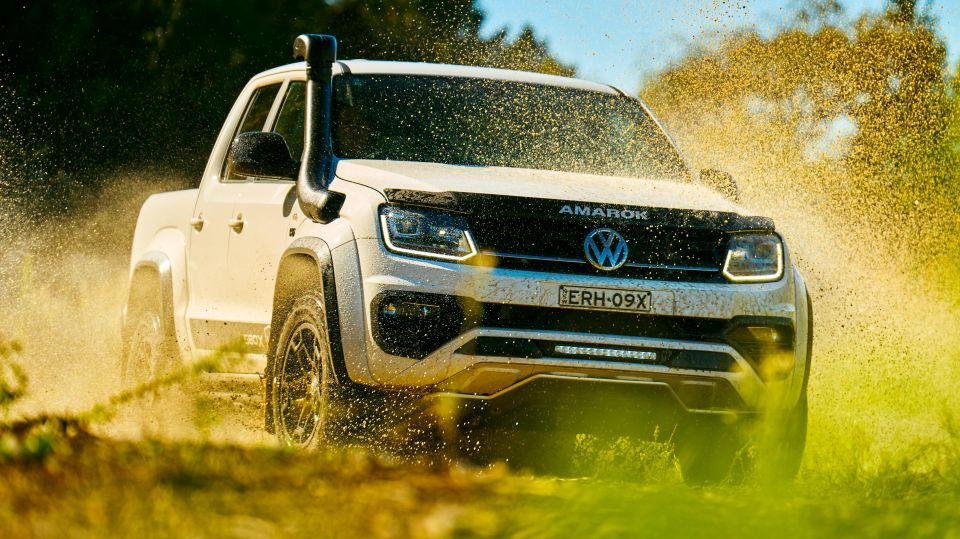
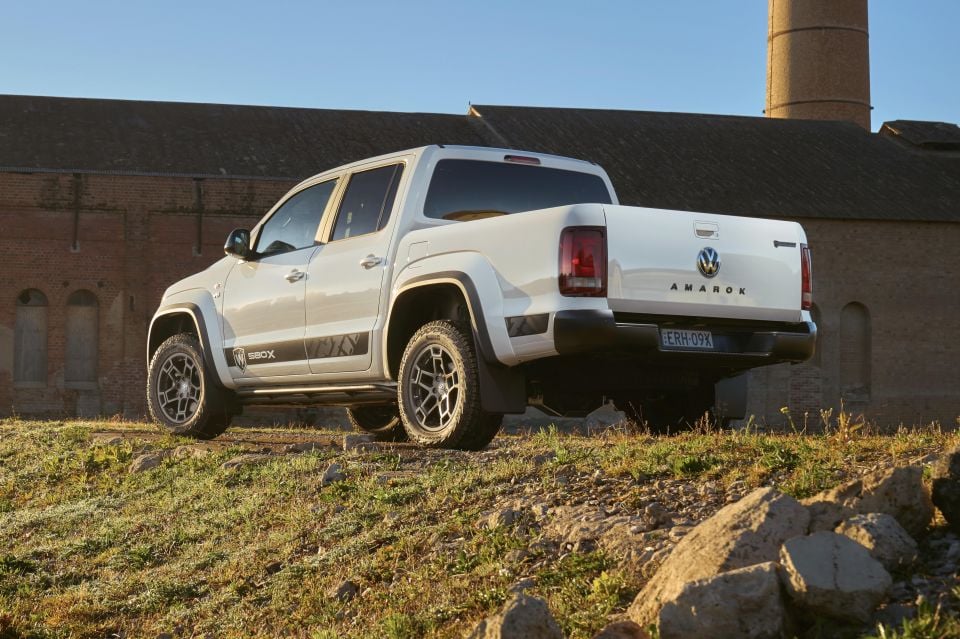

Quickly see how this car stacks up against its competition. Select any benchmark to see more details.
Where expert car reviews meet expert car buying – CarExpert gives you trusted advice, personalised service and real savings on your next new car.
Australia is the key market for high-end Volkswagen Amarok derivatives, so it makes sense the company’s local arm has clout to co-develop special editions right here.
By pairing up with Walkinshaw Group, it’s been able to offer a range of modified Amaroks with better on- or off-road credentials. They’re a kind of swansong for the current model that dates to 2011, with the new (Ford-based) model to be revealed on July 7.
Walkinshaw Group has diversified since the demise of hotted-up Holdens, focusing on its racing operation, working with OEMs on pickup retunes, and developing a round-the-clock production line for conversions of Ram 1500s and Chevrolet Silverados to right-hand drive.
The Volkswagen Amarok ‘W-Series’ commenced with the more road-oriented Amarok W580 and W580S models, designed with tarmac touring in mind. You can read our existing review on those vehicles here.
They’ve now been joined by the (previously announced and priced) W580X lifted off-road option, which swaps out the former’s 20-inch wheels and road tyres, for 18″ units and chunkier Pirelli rubber – and adds underbody protection, bash-proof rock sliders, and more.

Walkinshaw will create only 600 of the Amarok W580X utes at its Clayton operation in Melbourne’s suburbs, tested as a finished product on trails in regional Victoria and South Australia, plus its own rigs.
In other words, it’s been re-engineered to a standard Volkswagen in Germany is happy to sign off on.
That doesn’t mean it’s automatically better than modifying your ute through the aftermarket, but it has created a turnkey alternative sold in dealers, and covered by the same factory warranty.
Contextually, Australia’s almost unique desire for expensive, modified Ranger– and HiLux-sized utes, plus its strong aftermarket players such as ARB, have led to a burgeoning set of OEM-backed ute modifications that have been engineered and finished here.
As well as the Volkswagen Amarok W-Series, there’s the Premcar-led Nissan Navara Warrior, Melbourne (in house) modified Toyota HiLux Rogue and Rugged X, the similarly locally-led Mazda BT-50 Thunder, and the new Ford Ranger Raptor which, while factory-built in Thailand, was largely designed and engineered in Australia.
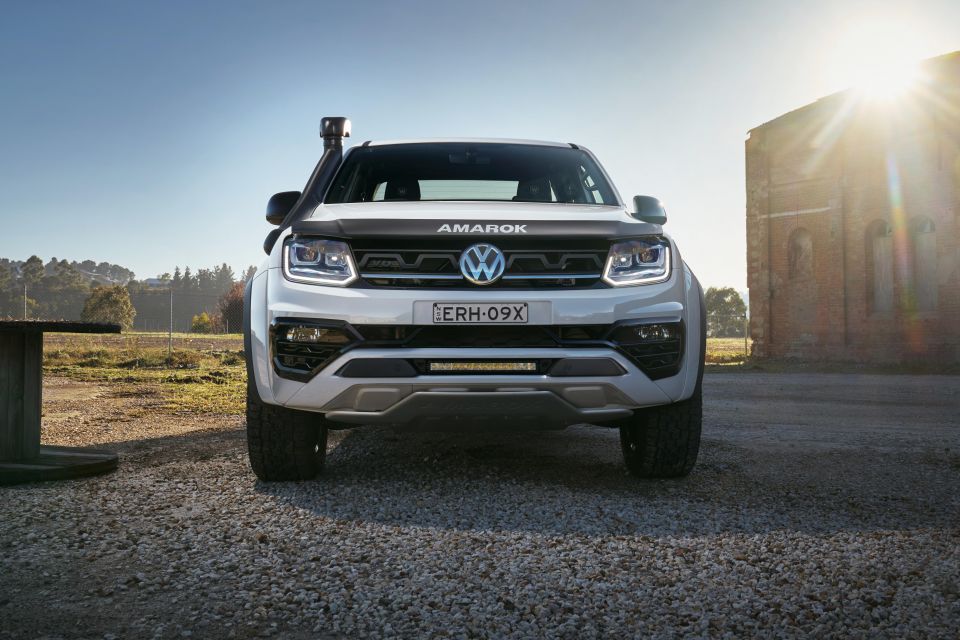
The 2022 Volkswagen Amarok W580X costs $78,890 before on-road costs – up $1500 over the initial pre-launch price announced in December 2021. By contrast, the Amarok W580S costs $82,990 before on-roads.
To put this $78,890 price into context, the base Amarok Core TDI550 V6 with automatic costs $53,890 before on-roads, the Amarok Sportline TDI550 costs $57,990, and the Amarok Highline costs $63,490 – the latter model having the same ‘TDI580’ engine tune as the W580X.
While the W580X benefits from extensive (and expensive) local engineering work and uses undeniably good-quality accessories and bespoke add-ons, it certainly commands a sizeable premium over another Amarok running the same mechanicals – namely, $15,400.
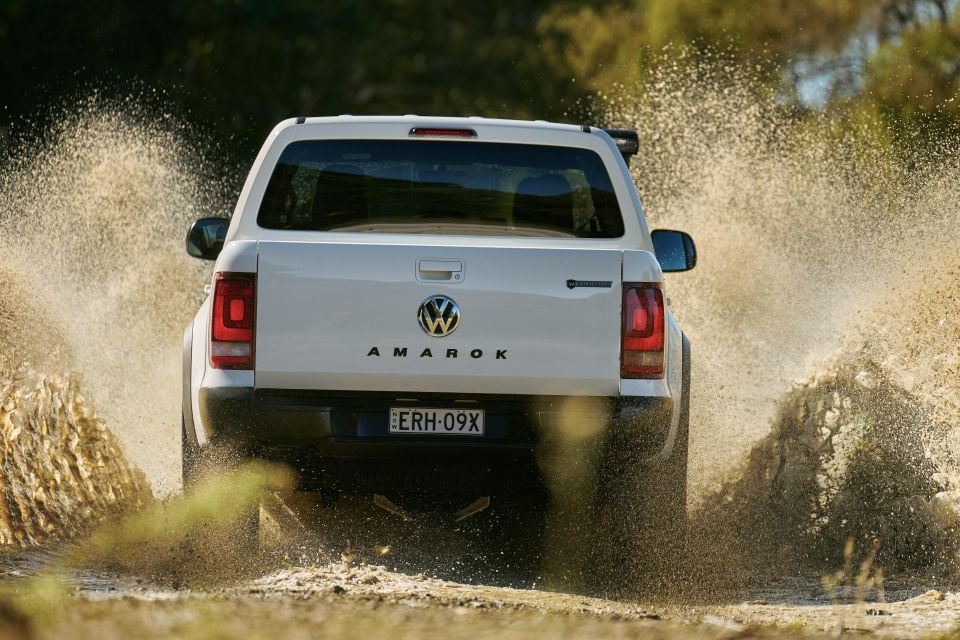
On a side note, a flick through the classifieds shows dealers charging anywhere from $86,990 drive-away, up to $95,963…
Still, by all accounts Volkswagen Australia is having little trouble selling on all 600 units of this, the Amarok’s apogee.
For further context, a Nissan Navara Pro-4X Warrior costs $69,990 before on-roads, the Toyota HiLux Rugged X $70,750, the BT-50 Thunder $71,190, and perhaps the most obvious alternative is the new-generation, twin-turbo petrol V6-powered Ford Ranger Raptor priced at $85,490.
Given the extent of its performance upgrades, the new Mk2 Raptor actually doesn’t look like terrible value, but I digress…
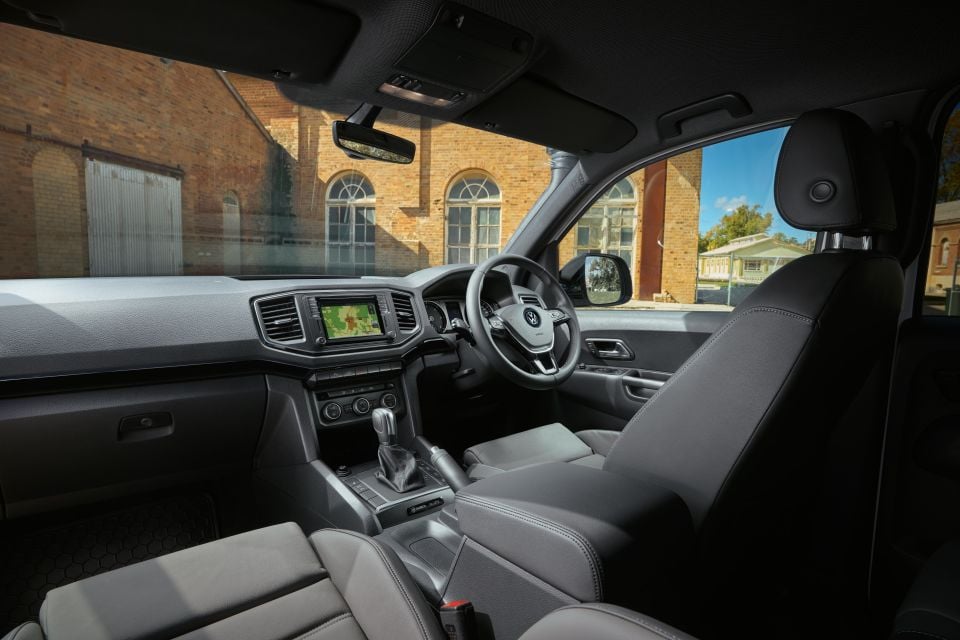
Buy your new car without the stress. It's fast, simple and completely free.

Great service from Travis and team, second time I have used this business would not hesitate to recommend them to anyone
Craig C.
Purchased a Ford Ranger in Sunshine Coast, QLD
CarExpert helped Craig save $7,224 on his Ford Ranger, now let us save you on your next new car.
Get your BEST priceIn some ways the Amarok interior betrays the car’s age, particularly when it comes to the small touchscreen with letterbox-view reversing camera and no standard navigation, and the comparatively pokey back seats (in legroom terms only) with no rear-side airbags.
The USB-A port is hidden deep beneath the dashboard, and the lack of more than one plug stands out against more device-friendly competition. Rear occupants do have a 12V.
And yet in other ways it remains a very solid – literally – proposition, with excellent fit-and-finish, hard-wearing plastics, excellent ergonomics with ample fore-and-aft wheel adjustment, good elbow room thanks to its wider-than-average cabin, and sufficient storage.

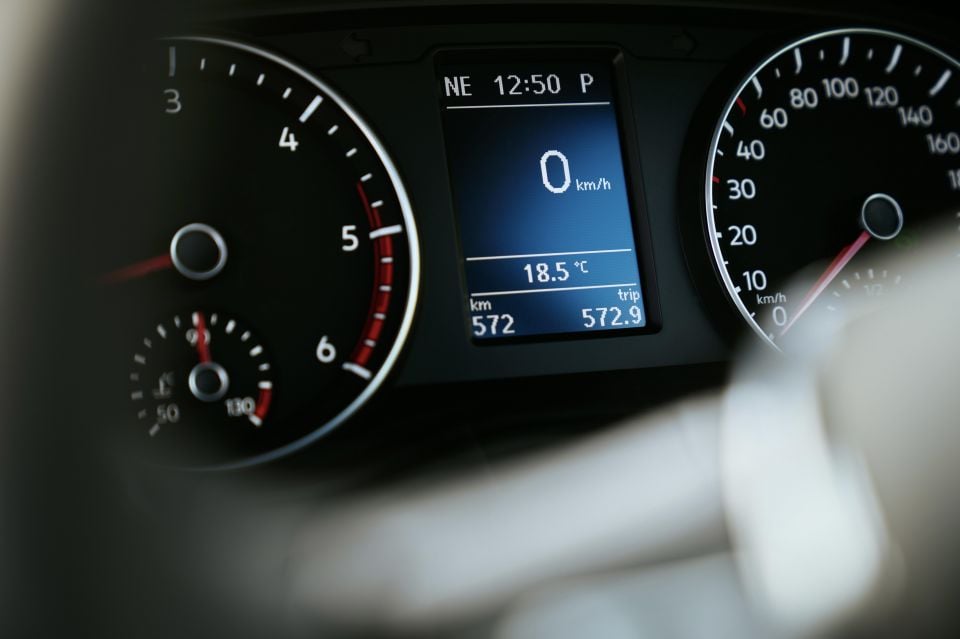
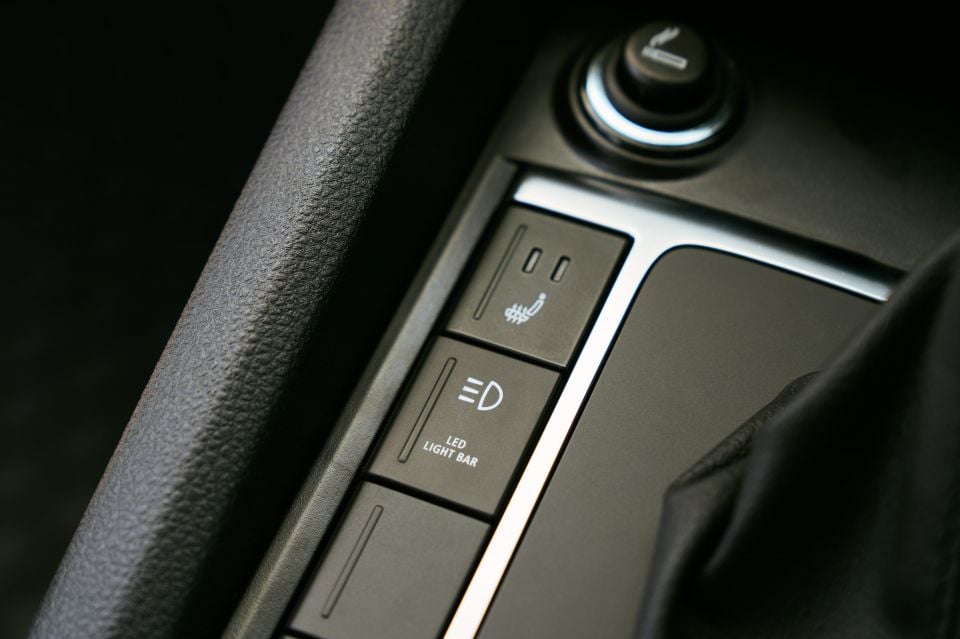
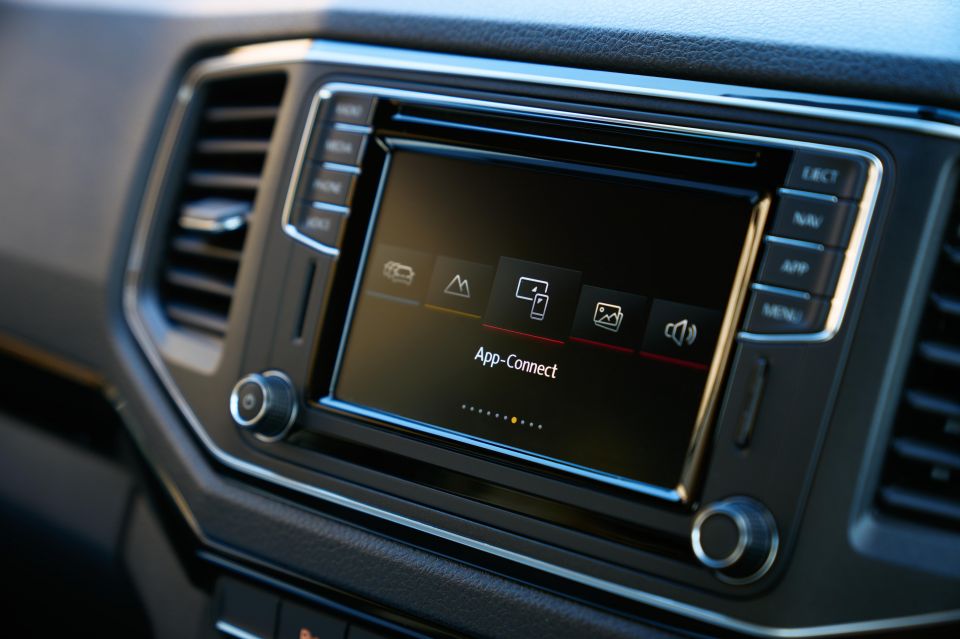
The optional ErgoComfort seats are also seriously supportive and comfortable, although the base seats are actually pretty good as well. An undoubted highlight.
The driver instruments are analogue, comprising a small and no-frills trip computer between a digital speedo, and there plenty of knobs and buttons to control core functions.
The trick 75W light bar is also properly integrated, with a button along the transmission tunnel there to operate it in conjunction with high-beam. There’s a combination of spot- and flood-lights.
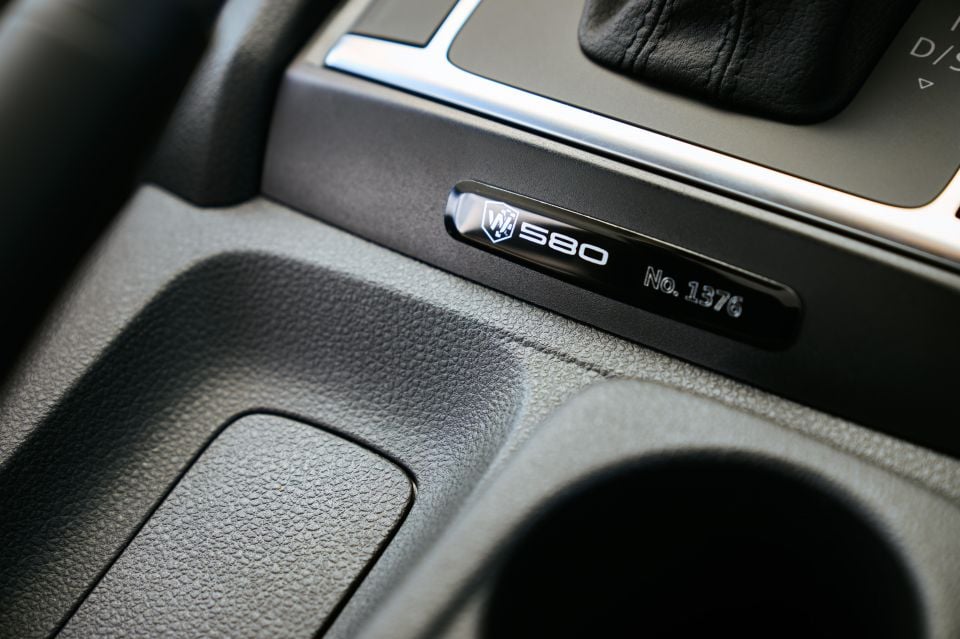
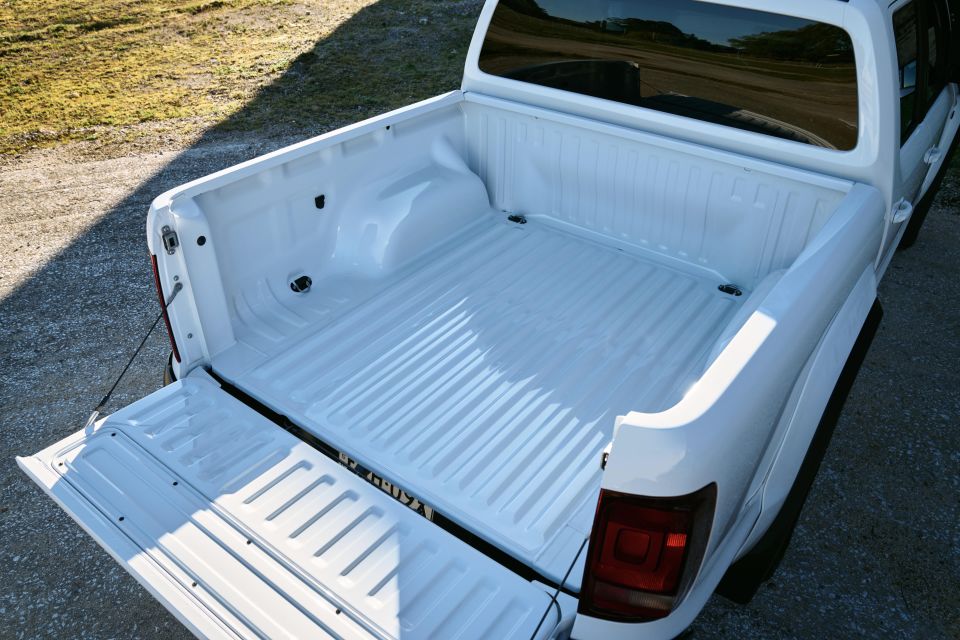
Other W580X-specific touches include floor mats, headrest logos, and… Well, that’s it. Wait, there’a also a build plaque!
It’s not exactly flash, but it’s aged much better than you might expect it to have done – so long as you’re aware of its contextual flaws – and the fundamental stuff in terms of build quality and ergonomics are still sound.
There’s no tub liner or sports bar, which you can address via VW’s accessories catalogue or through the aftermarket.
It remains a highly useable tub, with room for a palette between the arches (dimensions are 1555mm long, 1620mm wide, 1222mm between the arches, and 508mm deep) and there are four tie-down points.
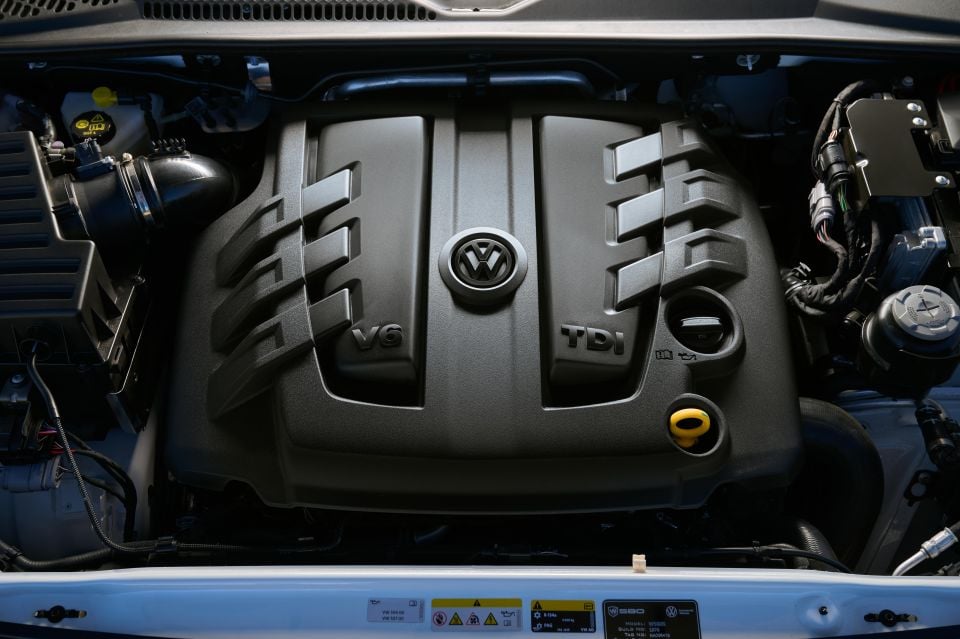
There are no mechanical changes to the V6 driveline.
The 3.0-litre turbo-diesel V6 produces 190kW of power (200kW on overboost spurts of 10 seconds under hard throttle) between 3250rpm and 4500rpm, and a strong 580Nm of torque as low as 1400rpm, out to 3000rpm.
It’s mated to a permanent 4×4 system and an eight-speed automatic transmission supplied by ZF, the low gear/s of which act as a low-range equivalent. Disc brakes are fitted at both ends, whereas some competitors still use rear drums.
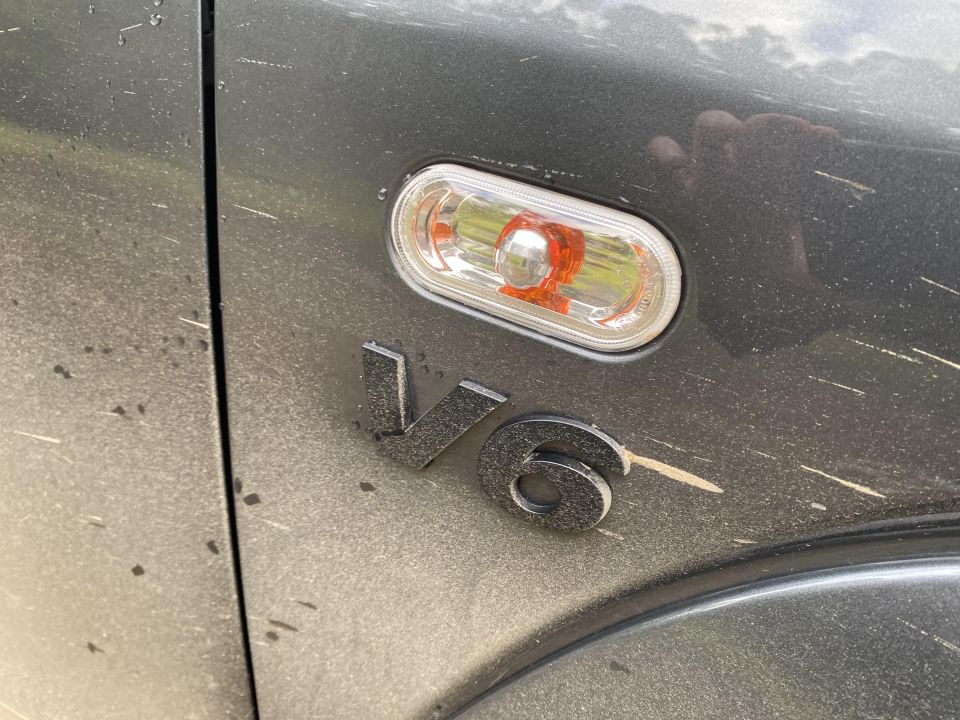
It outguns all of its four-cylinder diesel competitors when it comes to acceleration and rolling response, and will continue to do so until the new V6-powered Ranger arrives in mid-2022. Not bad for a ute dating back to 2010…
The Amarok W580X retains the base car’s 3.5-tonne braked towing capacity, uses a claimed 9.5 litres of diesel per 100km (I averaged 10.9L/100km on a fairly aggressive road loop), and has an 80-litre fuel tank.
The zero to 100km/h dash takes a brisk 7.3 seconds, which was the province of hot hatches just a generation ago.
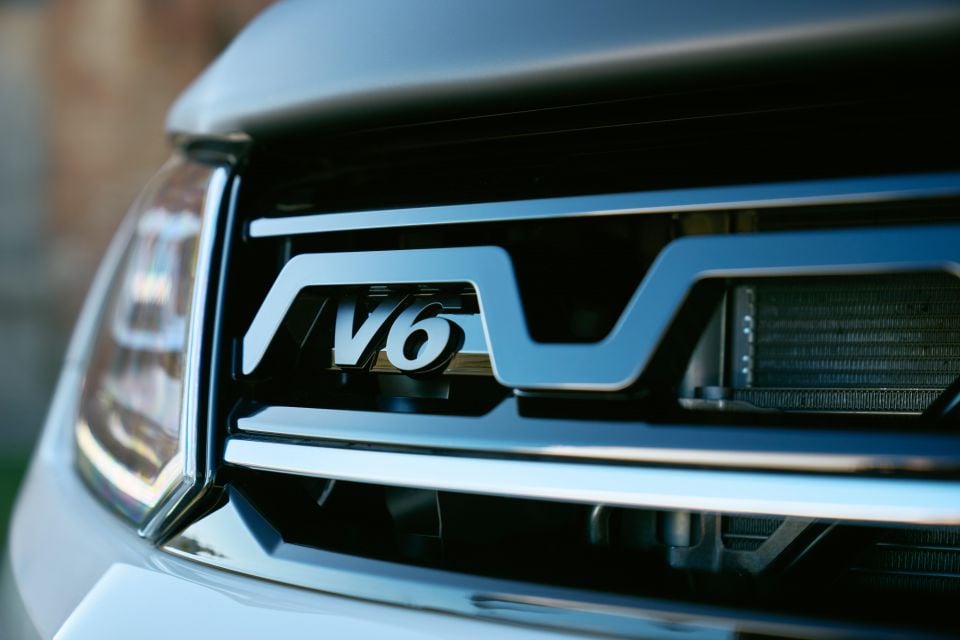
| Amarok W580X | |
|---|---|
| Engine | 3.0-litre V6 diesel |
| Power | 190kW |
| Torque | 590Nm |
| Fuel economy | 9.5L/100km |
| Fuel tank | 80L |
| 0-100km/h | 7.3 seconds |
| Towing capacity | 3.5-tonnes |

While the W580X is ostensibly the off-road special, it’s clearly been tuned to retain the Amarok’s (still!) class-leading on-road handling as well. It’s wide, stable, grippy and even a bit agile.
The VW doesn’t completely smooth out road imperfections like a Ranger Raptor with its Fox shocks – especially at the leaf-sprung rear – however the Amarok’s hydraulic steering feels more connected to the wheels, and its slightly firmer character results in better cornering balance and sharper turn-in.
The Pirelli Scorpion all-terrain plus tyres are a bit of a revelation, pairing with the full-time 4WD (Torsen diff, 40:60 front to rear distribution, traction control intervention at each corner) to offer excellent grip on slippery tarmac as well as suppressing most of the surface noises – not something rough-road rubber always manages to do.
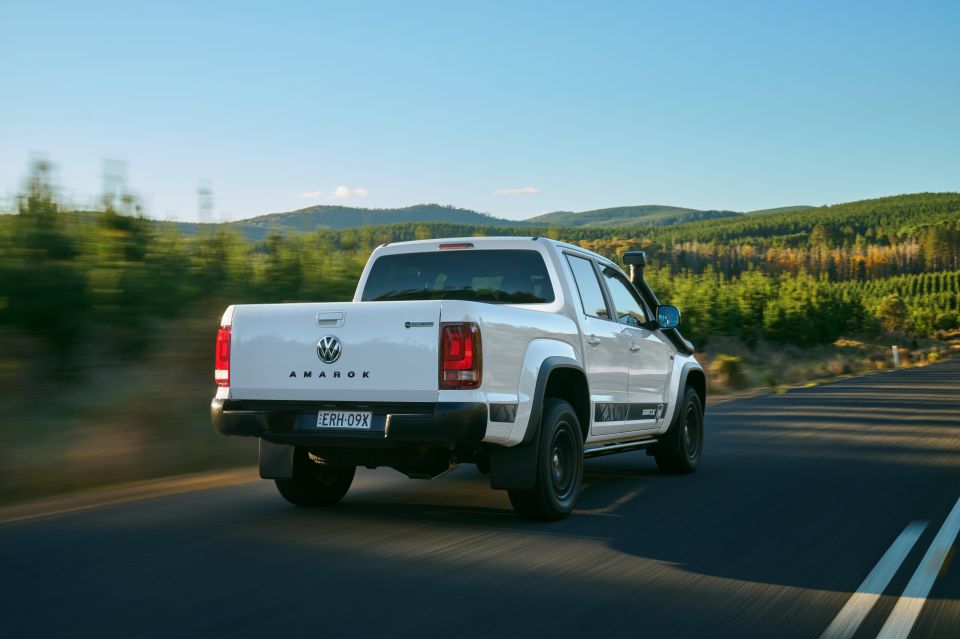
It’s honestly an indictment that such an aged design still betters all the other current-shape dual-cabs when it comes to handling on challenging roads. Sure, it’s not a high priority for a body-on-frame ute, but it’s interesting regardless.
This dynamism is really bolstered by that engine: it’s not the most refined unit out there, especially with the optional Darth Vader-imitating Seikel A-pillar snorkel intake, but it goes like the clappers off the line, and has a notably strong mid-range for rolling response.
It also retains the crucial 3.5t towing capacity.
I’m afraid to say the local launch event put us over a fairly tame bush path, though I can attest to the efficacy of the off-road button on the centre tunnel in seemingly tempering power delivery, plus the tyres’ ability to grip on wet clay.
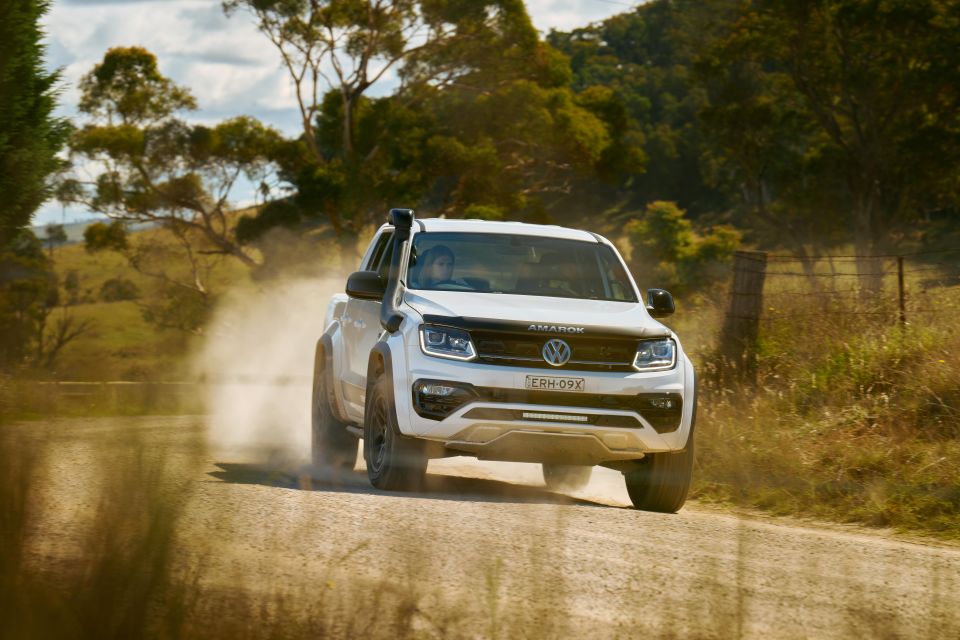
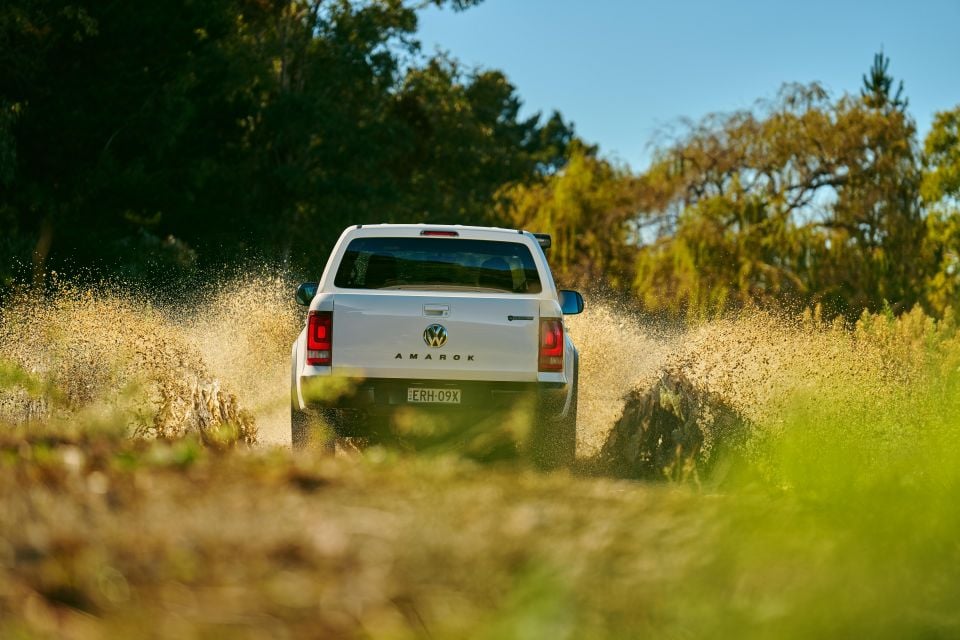
The strong chassis-mounted rock sliders and copious underbody bash protection, plus a 40mm lift and retuned new shocks, give you a better shot at not only clambering over obstacles, but keeping the hidden bits free of damage.
There’s no traditional low-range here, with the eight-speed auto using its first gear in lieu. Really hardcore users may indeed wish for a traditional two-speed transfer case, but in my experiences over the years it generally works well.
That’s one thing I’ve always liked about the Amarok: you can press an ‘off road’ driveline button and engage the mechanically-locking rear diff, but beyond this it’s a very simple, hands-off vehicle in terms of its 4×4 system and modes.
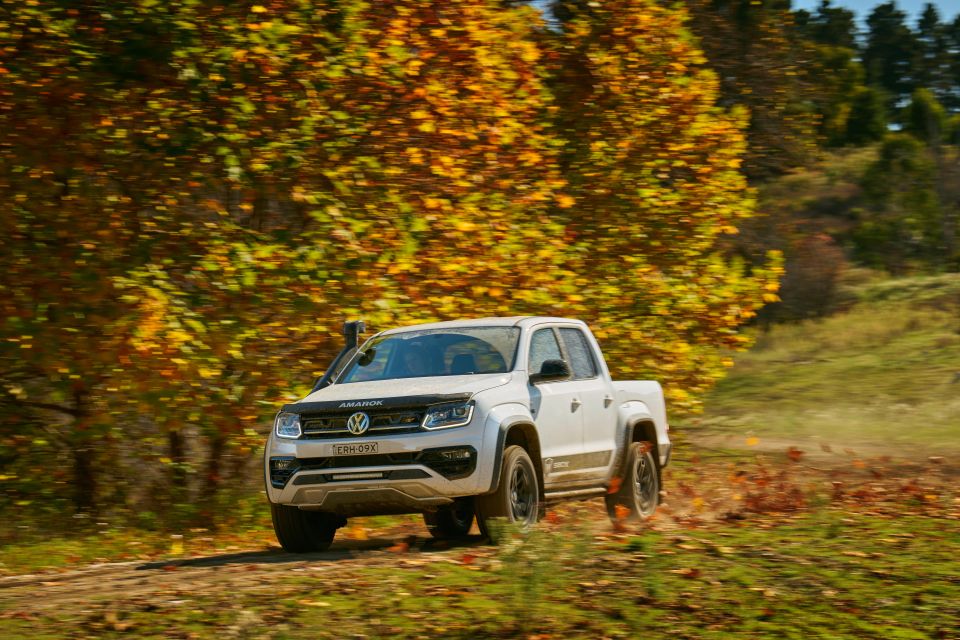
Where expert car reviews meet expert car buying – CarExpert gives you trusted advice, personalised service and real savings on your next new car.
Considering the majority of most people’s wheel time will be on tarmac (or perhaps gravel), it’s also sensible that Walkinshaw has made sure to tune in a good degree of on-road ability into this ostensibly rough-road package.
Old, absolutely. But outdated? Not completely.
One thing worth nothing is the complete lack of active driver-assist features, including autonomous emergency braking, lane-keeping aids, adaptive cruise control or blind-spot monitoring.
I understand some people don’t mind, but it’s important to note regardless that every competitor product offers at least some of these features now.
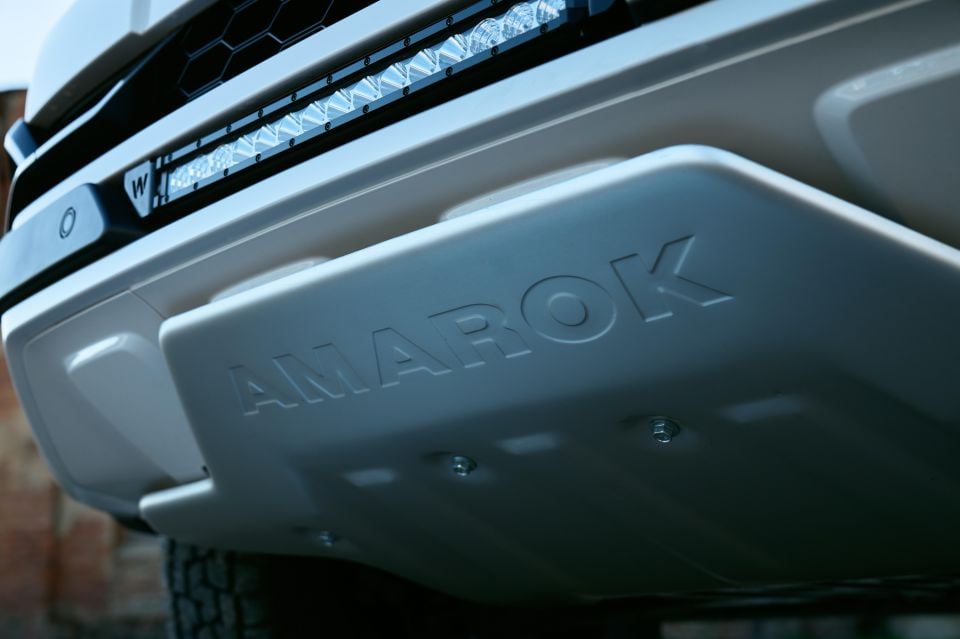
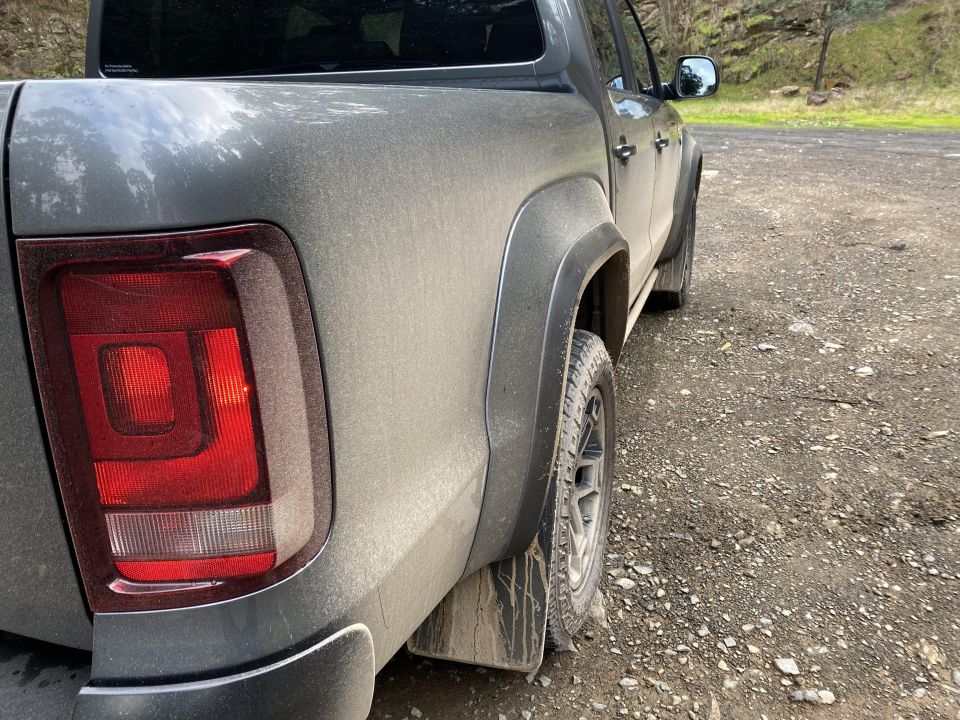

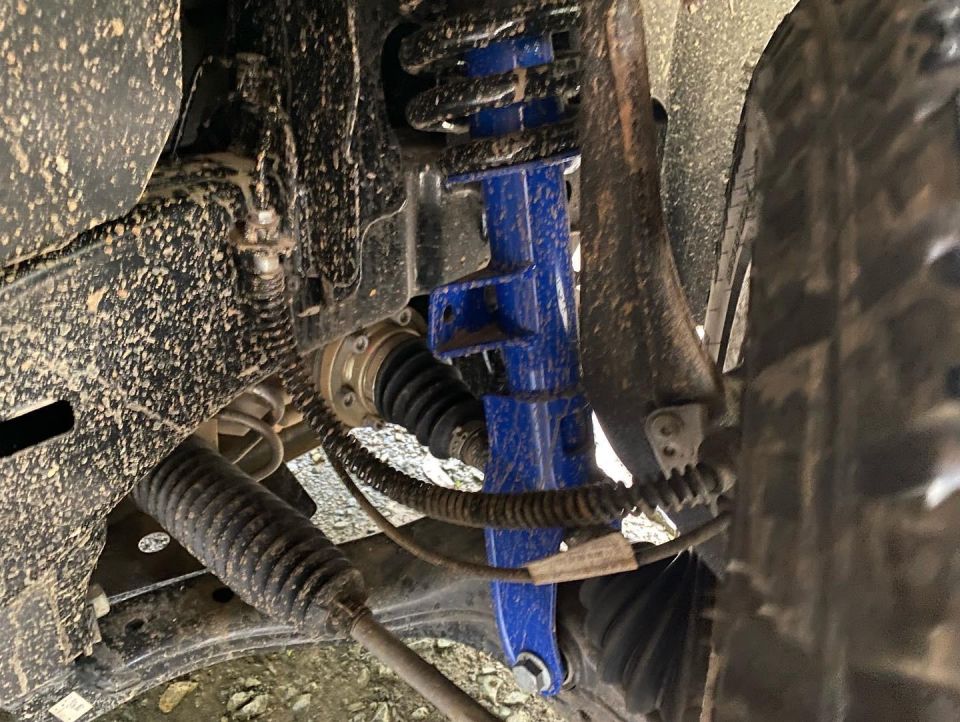
| Amarok W580X | |
|---|---|
| Front suspension | Transverse link Double wishbone MTV twin-tube damper Anti-roll bar 40mm lift |
| Rear suspension | Rigid axle Leaf spring MTV twin tube dampers Stabiliser bar |
| Steering | Hydraulic |
| Front brakes | 332mm ventilated discs |
| Rear brakes | 300mm ventilated discs |
| Turning circle | 12.45m |
| Weight | 2285kg |
| Gross combination mass | 6000kg |
| Payload | 847kg |
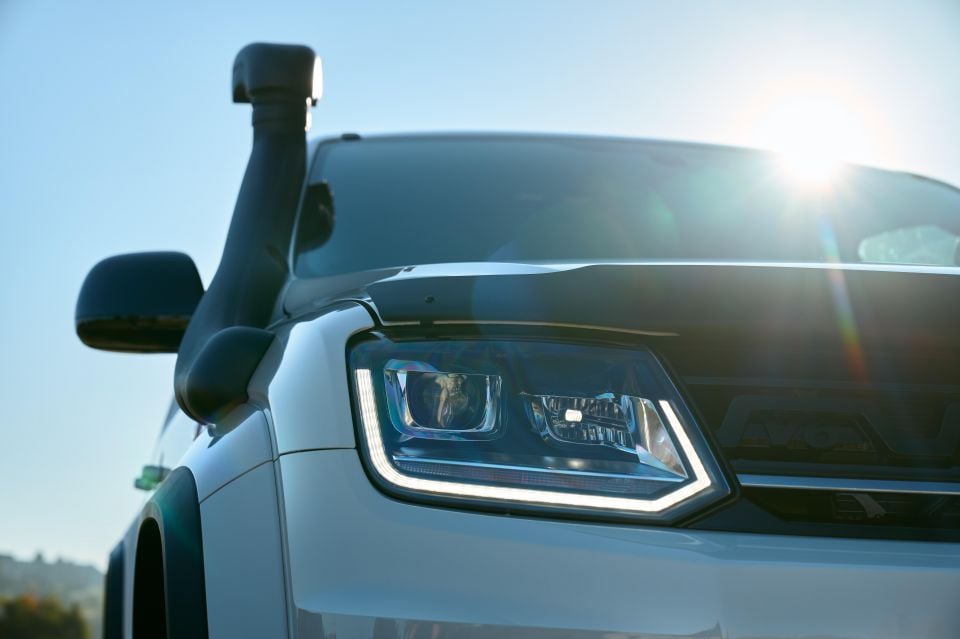

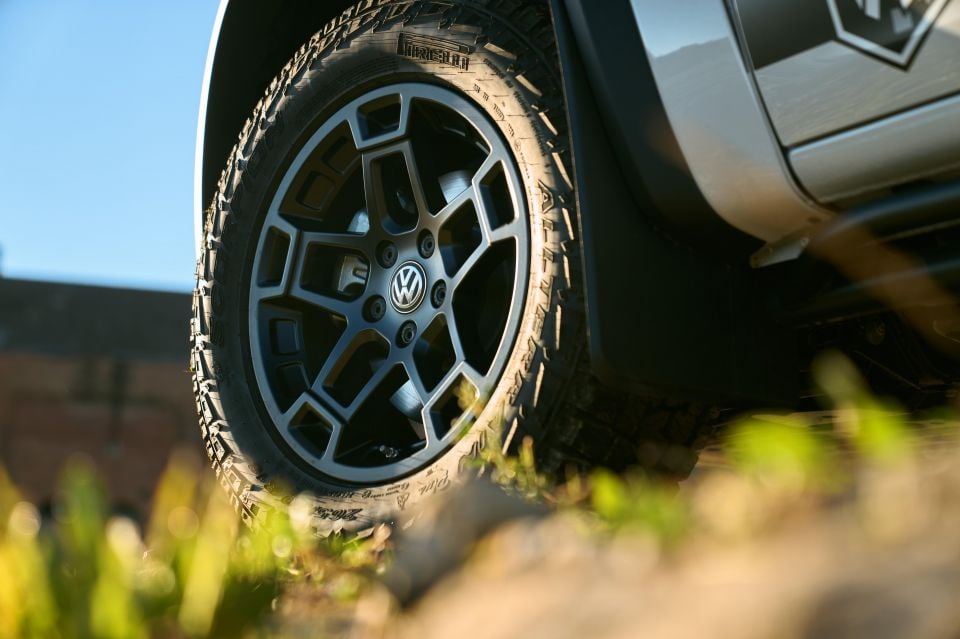

W580X highlights:
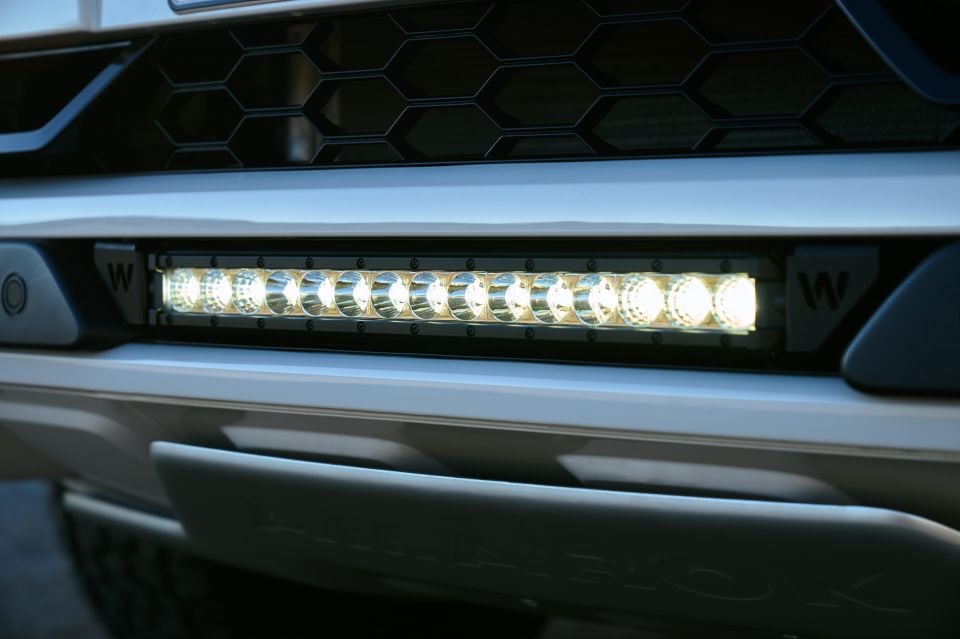
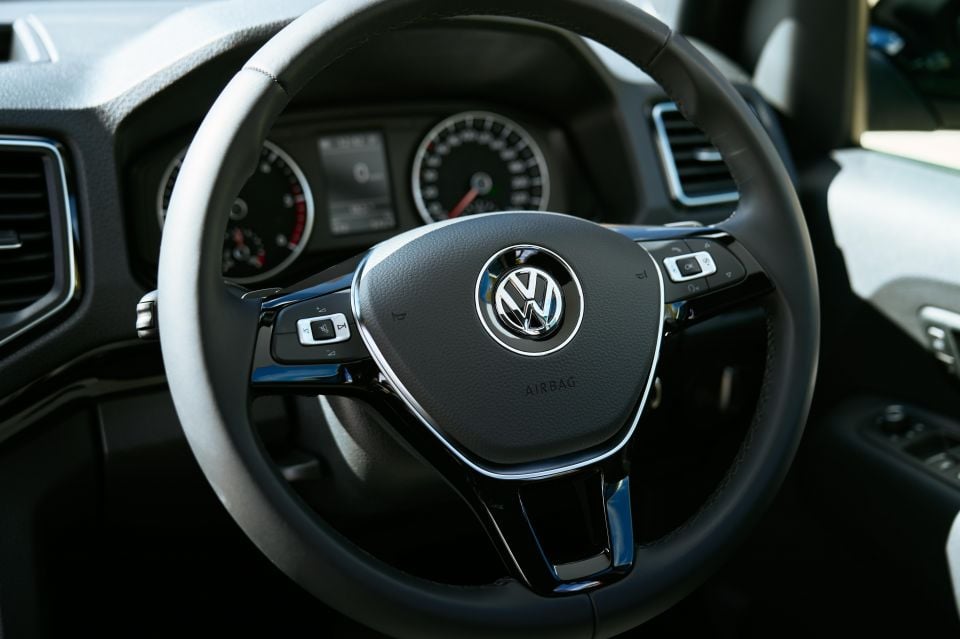


Other standard fare includes:
There are also two options listed:
That means if you buy the base Amarok W580X and tick the options boxes, your car’s RRP climbs to $83,970 plus on-road costs.
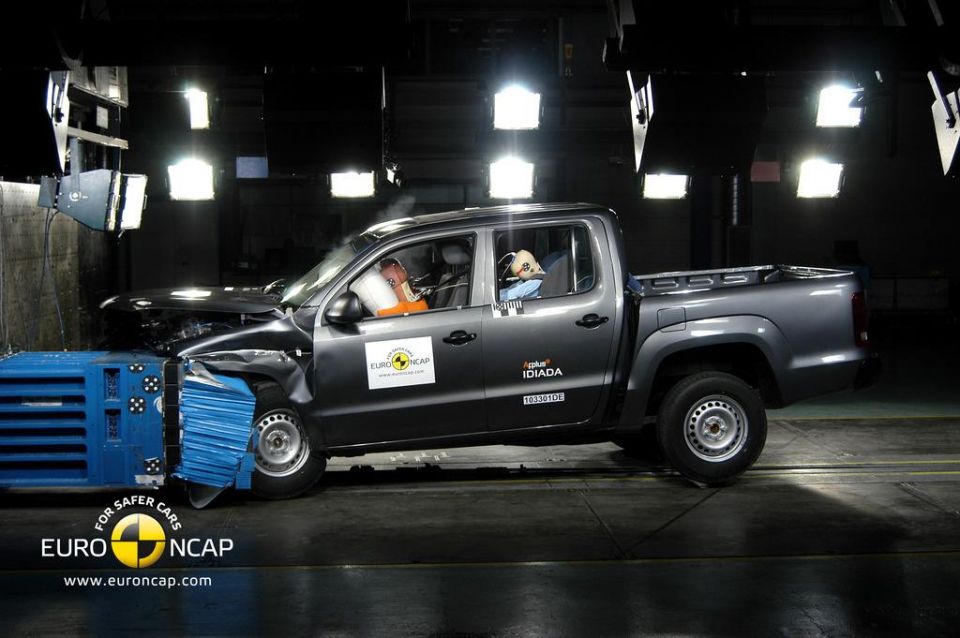
When the Amarok (as a 2.0-litre four-cylinder) was tested by ANCAP more than a decade ago in 2011, it received a rating of five stars.
That rating was based on a frontal offset score of 13.99 out of 16 and a side impact score of 16 out of 16. Whiplash and pedestrian protection were rated Good and Marginal, respectively.
All 2021 Volkswagen Amarok models come standard with front and front-side airbags and anti-lock brakes, but there are no airbags for rear seat occupants – unlike all competitors.
There’s also no active safety technology like autonomous emergency braking, which means the Amarok wouldn’t receive five stars if it was assessed again in 2022.
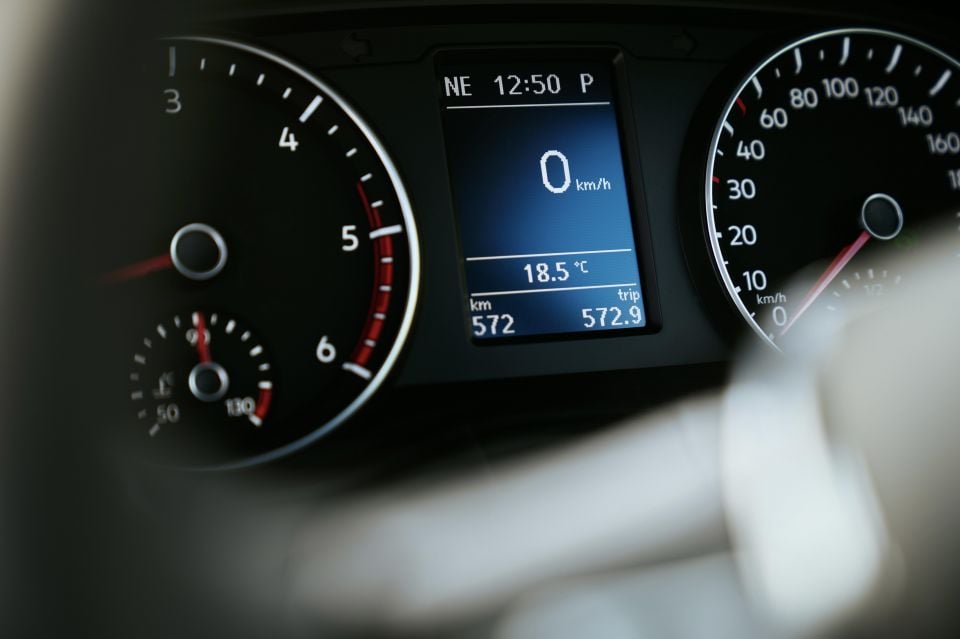
Like the wider Volkswagen range, the Amarok is backed by a five-year, unlimited-kilometre warranty.
Maintenance in the Amarok is required every 12 months or 15,000km – whichever comes first.
Volkswagen Australia offers five-year Care Plans which cover scheduled servicing for that period, and are significantly cheaper than paying as you go.
The five-year service package costs $2050 for the six-cylinder Amarok, according to the Volkswagen website.

Buy your new car without the stress. It's fast, simple and completely free.

Great service from Travis and team, second time I have used this business would not hesitate to recommend them to anyone
Craig C.
Purchased a Ford Ranger in Sunshine Coast, QLD
CarExpert helped Craig save $7,224 on his Ford Ranger, now let us save you on your next new car.
Get your BEST priceBased on what we’re told, Volkswagen Australia expects to sell all of the Amarok W580Xs in no time flat – even if on paper they frankly look pricey.
The other gripes here are those that apply to the base car, because the Walkinshaw package feels cohesive and balanced. It’s also supporting the Australian automotive industry, from a parochial perspective.
As a sort of farewell to the first-generation Amarok, it feels fitting, even if the new Ranger-based model that’s just around the corner is an elephant in the room. Perhaps some buyers might even see this end-of-the-line model as something of a future classic.
My main take-away from this car is the strength of the Volkswagen Australia and Walkinshaw tie-up, which VW insists will carry over to the new model – earlier in the life cycle. These W-Series models are a proof-of-concept, and a very smart concept it is.
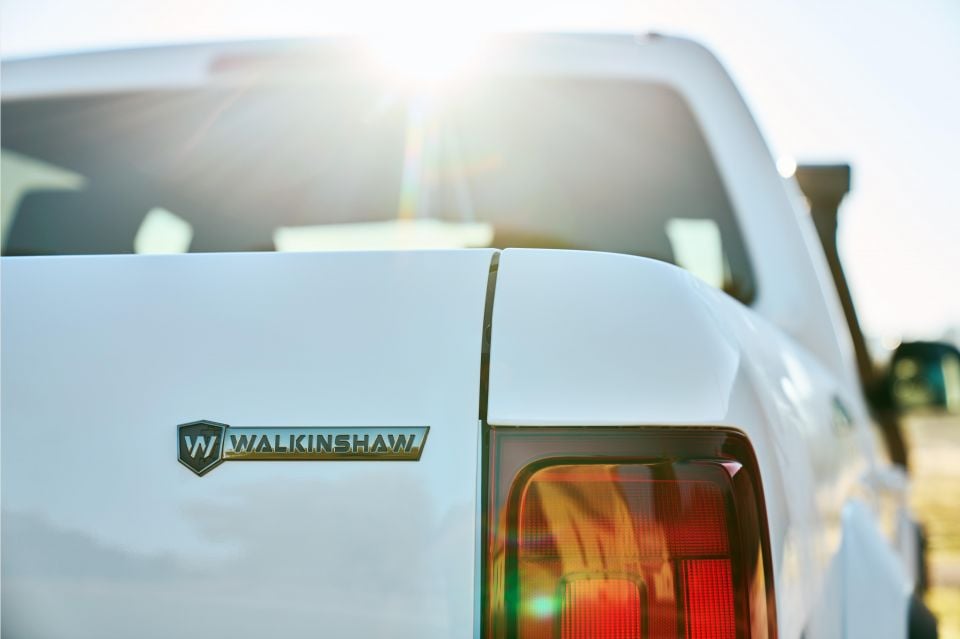
Click the images for the full gallery
MORE: Volkswagen and Walkinshaw in talks over new Amarok flagship MORE: Everything Volkswagen Amarok
Where expert car reviews meet expert car buying – CarExpert gives you trusted advice, personalised service and real savings on your next new car.


William Stopford
1 Month Ago


Paul Maric
23 Days Ago


Max Davies
17 Days Ago


Josh Nevett
9 Days Ago
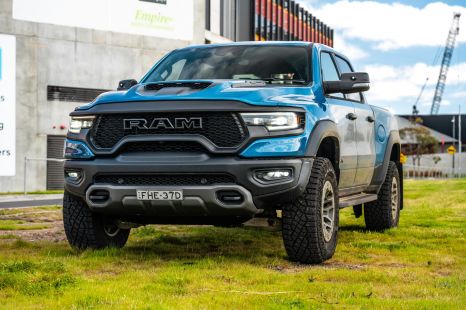

Max Davies
8 Days Ago
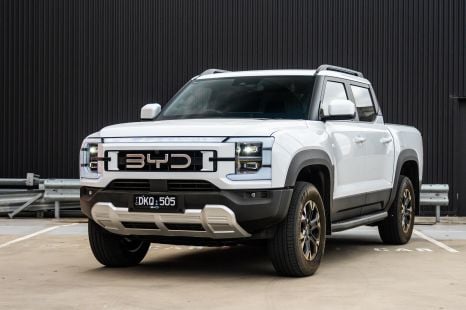

William Stopford
8 Days Ago